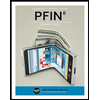
Concept explainers
Problem 10-21A Using
Daryl Kearns saved $240,000 during the 30 years that he worked for a major corporation. Now he has retired at the age of 60 and has begun to draw a comfortable pension check every month. He wants to ensure the financial security of his retirement by investing his savings wisely and is currently considering two investment opportunities. Both investments require an initial payment of $160,000. The following table presents the estimated

Mr. Kearns decides to use his past average return on mutual fund investments as the discount rate; it is 8 percent.
Required
Round your computation to two decimal points.
- a. Compute the net present value of each opportunity. Which should Mr. Kearns adopt based on the net present value approach?
- b. Compute the payback period for each project. Which should Mr. Kearns adopt based on the payback approach?
- c. Compare the net present value approach with the payback approach. Which method is better in the given circumstances?
a.
Ascertain the net present value of each opportunity, and state whether person K should approve the given project or not.
Explanation of Solution
Net present value method:
Net present value method is the method which is used to compare the initial cash outflow of investment with the present value of its cash inflows. In the net present value, the interest rate is desired by the business based on the net income from the investment, and it is also called as the discounted cash flow method.
Ascertain the net present value of each opportunity, and state whether person K should approve the given project or not as follows:
Opportunity 1:
| Net present value of opportunity 1 | |||
| Year | Net cash flow (A) | Present value of $1 at 8% [from table 1 in appendix ](B) | Present value of net cash flow |
| 1 | $44,000 | 0.925926 | $40,740.74 |
| 2 | $47,200 | 0.857339 | $40,466.40 |
| 3 | $63,200 | 0.793832 | $50,170.18 |
| 4 | $80,000 | 0.735030 | $58,802.40 |
| Total present value of cash flows | $190,179.73 | ||
| Less: Cost of investment | $160,000.00 | ||
| Net present value of the project | $ 30,179.73 | ||
Table (1)
Opportunity 2:
| Net present value of opportunity 2 | |||
| Year | Net cash flow (A) | Present value of $1 at 8% [from table 1 in appendix ](B) | Present value of net cash flow |
| 1 | $81,600 | 0.925926 | $75,555.56 |
| 2 | $86,400 | 0.857339 | $74,074.09 |
| 3 | $16,000 | 0.793832 | $12,701.31 |
| 4 | $16,000 | 0.735030 | $11,760.48 |
| Total present value of cash flows | $174,091.44 | ||
| Less: Cost of investment | $160,000.00 | ||
| Net present value of the project | $14,091.44 | ||
Table (2)
In this case, opportunity 1is better for the investment, because opportunity 1 ($30,179.73) has higher net present value than opportunity 2 ($14,091.44).
b.
Compute the payback period for each project, and state whether person K should approve the given project or not.
Explanation of Solution
Payback period: Payback period is the expected time period which is required to recover the cost of investment. It is one of the capital investment method used by the management to evaluate the proposal of long-term investment (fixed assets) of the business.
Compute the payback period for each project, and state whether person K should approve the given project or not as follows:
Opportunity 1:
| Cash payback period of opportunity 1 | ||
| Years and months | Net cash flows ($) | Cumulative net cash flows ($) |
| 1 | 44,000 | 44,000 |
| 2 | 47,200 | 91,200 |
| 3 | 63,200 | 154,400 |
| 1 month (1) | 5,600 | 160,000 |
Hence, the cash payback period of opportunity 1 is 3 years and 1 month.
Opportunity 2:
| Cash payback period of opportunity 2 | ||
| Year and months | Net cash flows | Cumulative net cash flows |
| 1 | 81,600 | 81,600 |
| 11 months (2) | 78,400 | 160,000 |
Hence, the cash payback period of opportunity 2 is 1 year and 11 months.
In this case, opportunity 2 is better for the investment, because opportunity 2 has shorter payback period than opportunity 1.
Working note:
Calculate the number of months in the cash payback period of opportunity 1:
Calculate the number of months in the cash payback period of opportunity 2:
c.
Compare the net present value approach will the payback approach, and state the method which is better for the given circumstance.
Explanation of Solution
Compare the net present value approach will the payback approach, and state the method which is better for the given circumstance as follows:
The net present value approach represents the net cash flow with consideration of the time value of money, whereas cash payback technique neglects cash flows occurring after the payback period, and it does not use the present value concept (time value of money) in valuing cash flows that are occurring in the different time period. In other word, payback period approach measures the risk of the investment rather than the profitability.
If an investor is very concerned about the risk of an investment, the payback period approach is best for the decision making. Under this circumstance, opportunity 2 is better for the investment.
If an investor is very concerned about the profitability of an investment, the net present value approach is best for the decision making. Under this circumstance, opportunity 1 is better for the investment.
Want to see more full solutions like this?
Chapter 16 Solutions
GEN COMBO LOOSELEAF SURVEY OF ACCOUNTING; CONNECT ACCESS CARD
- Exercise 10-10A (Algo) Using the internal rate of return to compare investment opportunities LO 10-3 Velma and Keota (V&K) is a partnership that owns a small company. It is considering two alternative investment opportunities. The first investment opportunity will have a three-year useful life, will cost $8,922.67, and will generate expected cash inflows of $3,400 per year. The second investment is expected to have a useful life of three years, will cost $7,989.00, and will generate expected cash inflows of $3,100 per year. Assume that V&K has the funds available to accept only one of the opportunities. (PV of $1 and PVA of $1) (Use appropriate factor(s) from the tables provided.) Required Calculate the internal rate of return of each investment opportunity. (Do not round intermediate calculations.) Based on the internal rates of return, which opportunity should V&K select?arrow_forwardQuestion content area top Part 1 (Saving for retirement—future value of an annuity) Selma and Patty Bouvier are twins and both work at the Springfield DMV. Selma and Patty Bouvier decide to save for retirement, which is 35 years away. They'll both receive an annual return of 12 percent on their investment over the next 35 years. Selma invests $2,000 per year at the end of each year only for the first 10 years of the 35-year period—for a total of $20,000 saved. Patty doesn't start saving for 10 years and then saves $2,000 per year at the end of each year for the remaining 25 years—for a total of $50,000 saved. How much will each of them have when they retire? Question content area bottom Part 1 a. How much will Selma have when she retires? $enter your response here (Round to the nearest cent.) Part 2 b. How much will Patty have when she retires? $enter your response here (Round to the nearest cent.)arrow_forwardQuestion 6 options: Investigation and a reasonable amount of work had brought the following project to the attention of Arthur Morgan, CEO of Valentine Ventures. The following information is presented to you: CCA rate Building: 4% CCA rate Equipment: 30% Cost of Capital 12% Corporate Tax Rate 40% An immediate cash outlay of $800,000 will be required to purchase vacant land. The vacant land will be required to house the specialized building that will be constructed over the next 2 years. The building will require an immediate down payment of $700,000 now and $1,600,000 upon completion of the building at the end of the second year. New equipment also will be placed in the building at the end of the 2nd year. The equipment will require annual year end purchase payments of $400,000 in year one and two. The equipment…arrow_forward
- eBook Problem 22-01 An investment costs $21,259 and will generate cash flow of $7,000 annually for four years. The firm’s cost of capital is 10 percent. Use Appendix D to answer the questions. What is the investment’s internal rate of return? Round your answer to the nearest whole number. % Based on the internal rate of return, should the firm make the investment? The investment made. What is the investment’s net present value? Use a minus sign to enter a negative value, if any. Round your answer to the nearest dollar. $ Based on the net present value, should the firm make the investment? The investment made.arrow_forwardCh 25 - Capital Investment Problem Bradley company is looking into investing in the purchase of a new building for $250,000. The building is expected to have a 10-year life with $30,000 salvage value. Annual net cash flows are expected to be $60,000 and Net Income is expected to be $40,000. The company's required rate of return is 12%. Using the information above, compute the following (round all answers to 1 decimal place): Calculate the Cash Payback Period Calculate the Net Present Value Compute the NPV of another similar building with a cost of $300,000, with 10-year life, salvage value of $20,000, which can generate $65,000 in annual cash flows, compute the profitability index of the two buildings. Compute the Profitability Index of both buildings and state which building is a better investment and why? Compute the Annual Rate of Return, assuming the company uses Straight-Line depreciation The company accepts investments with Cash Payback period of less than the half of the…arrow_forward(Related to Checkpoint 5.4) (Present value) Sarah Wiggum would like to make a single investment and have $2.0 million at the time of her retirement in 35 years. She has found a mutual fund that will earn 4 percent annually. How much will Sarah have to invest today? If Sarah earned an annual return of 14 percent, how soon could she then retire? a. If Sarah can earn 4 percent annually for the next 35 years, the amount of money she will have to invest today is $nothing. (Round to the nearest cent.)arrow_forward
 PFIN (with PFIN Online, 1 term (6 months) Printed...FinanceISBN:9781337117005Author:Randall Billingsley, Lawrence J. Gitman, Michael D. JoehnkPublisher:Cengage Learning
PFIN (with PFIN Online, 1 term (6 months) Printed...FinanceISBN:9781337117005Author:Randall Billingsley, Lawrence J. Gitman, Michael D. JoehnkPublisher:Cengage Learning
